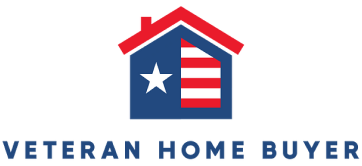Understanding the va loan eligibility who qualifies and how to apply process can be a crucial step for veterans and active-duty service members seeking to purchase a home. This guide will help you navigate the eligibility criteria and the application process for a VA loan, making the journey to homeownership smoother and more accessible.
What is a VA Loan?
A VA loan is a mortgage option available to veterans, active-duty service members, and some surviving spouses. These loans are guaranteed by the U.S. Department of Veterans Affairs (VA), which means lenders have reduced risk, allowing for more favorable terms for borrowers. VA loans often feature no down payment requirements, lower interest rates, and no private mortgage insurance (PMI).
Va Loan Eligibility Who Qualifies and How to Apply?
Basic Eligibility Requirements
To qualify for a VA loan, you must meet at least one of the following criteria:
- Service Duration:
- Active-Duty Service Members: At least 90 consecutive days during wartime or 181 days during peacetime.
- National Guard and Reserve Members: At least six years of service or 90 days of active service (with at least 30 consecutive days).
- Veteran Status:
- Discharged under conditions other than dishonorable.
- Surviving Spouses:
- Unmarried spouses of veterans who died in service or due to a service-connected disability.
- Surviving spouses who remarry after the age of 57, on or after December 16, 2003.
Detailed Service Requirements
The specific requirements can vary based on when you served and your service status:
- World War II, Korean War, Vietnam War: At least 90 days of active duty.
- Post-Vietnam Era: At least 181 days of continuous active duty.
- Gulf War and Post-Gulf War Era: At least 24 continuous months or the full period (at least 90 days) for which you were called to active duty.
- Reservists and National Guard Members: Six years of service unless called to active duty.
Other Eligibility Considerations
- Discharge Status: Must have an honorable, general, or under honorable conditions discharge.
- Certificate of Eligibility (COE): Must obtain a COE to prove to lenders that you meet the eligibility requirements for a VA loan.
How to Apply for a VA Loan
Step 1: Obtain Your Certificate of Eligibility (COE)
The COE is a crucial document that verifies to your lender that you meet the eligibility requirements for a VA loan. Here’s how to obtain it:
- Online Application: Apply through the VA’s eBenefits portal.
- Lender Assistance: Many VA-approved lenders can obtain the COE for you during the pre-approval process.
- Mail Application: Complete VA Form 26-1880 and mail it to the VA.
Step 2: Pre-Qualify for Your Loan
Pre-qualification gives you an estimate of how much you can borrow based on your financial status. This step is not mandatory but can help you understand your budget and streamline the home-buying process. During pre-qualification, you’ll need to provide:
- Income details.
- Employment history.
- Credit history.
Step 3: Find a VA-Approved Lender
Not all lenders offer VA loans. It’s important to find a lender who is experienced with VA loans to ensure you receive the best possible terms and that the process goes smoothly. Look for VA-approved lenders and compare their offerings.
Step 4: Get Pre-Approved
Pre-approval is a more rigorous process than pre-qualification and involves a thorough examination of your financial situation. You will need to provide:
- Proof of income (W-2 statements, pay stubs, tax returns).
- Credit report.
- Employment verification.
- COE.
A pre-approval letter shows sellers you are a serious buyer and can be a powerful tool in a competitive housing market.
Step 5: Start House Hunting
With your pre-approval letter in hand, you can start searching for homes within your budget. Work with a real estate agent who has experience with VA loans to help you find a suitable property.
Step 6: Make an Offer and Sign a Purchase Agreement
Once you find a home, you’ll make an offer. If the seller accepts, you’ll sign a purchase agreement. This contract will outline the terms of the sale and is necessary for the next steps in the loan process.
Step 7: VA Appraisal and Underwriting
- VA Appraisal: The VA will conduct an appraisal to ensure the property meets minimum property requirements and is worth the loan amount.
- Underwriting: The lender’s underwriter will review your application, financial documents, and appraisal report to determine if you meet the loan criteria.
Step 8: Closing the Loan
If your loan is approved, you’ll proceed to closing. During the closing process, you’ll sign the final loan documents, pay any closing costs, and receive the keys to your new home.

Benefits of VA Loans
No Down Payment
One of the most significant benefits of a VA loan is the ability to purchase a home with no down payment, which can make homeownership more accessible for veterans and service members.
No Private Mortgage Insurance (PMI)
Unlike conventional loans, VA loans do not require PMI, which can save you hundreds of dollars each month.
Competitive Interest Rates
VA loans typically offer lower interest rates compared to conventional loans, making your monthly payments more affordable.
Flexible Credit Requirements
VA loans are more lenient with credit scores, which can benefit borrowers with less-than-perfect credit histories.
Limit on Closing Costs
The VA limits the amount you can be charged for closing costs, protecting you from excessive fees.
Foreclosure Avoidance
The VA offers financial counseling and assistance to help veterans avoid foreclosure if they encounter financial difficulties.
Conclusion
VA loans provide an excellent opportunity for veterans, active-duty service members, and eligible spouses to achieve homeownership with favorable terms. By understanding the eligibility requirements and following the application process, you can take full advantage of the benefits offered by VA loans. Start by obtaining your COE, get pre-approved, and find a VA-approved lender to guide you through the journey to owning your new home.
